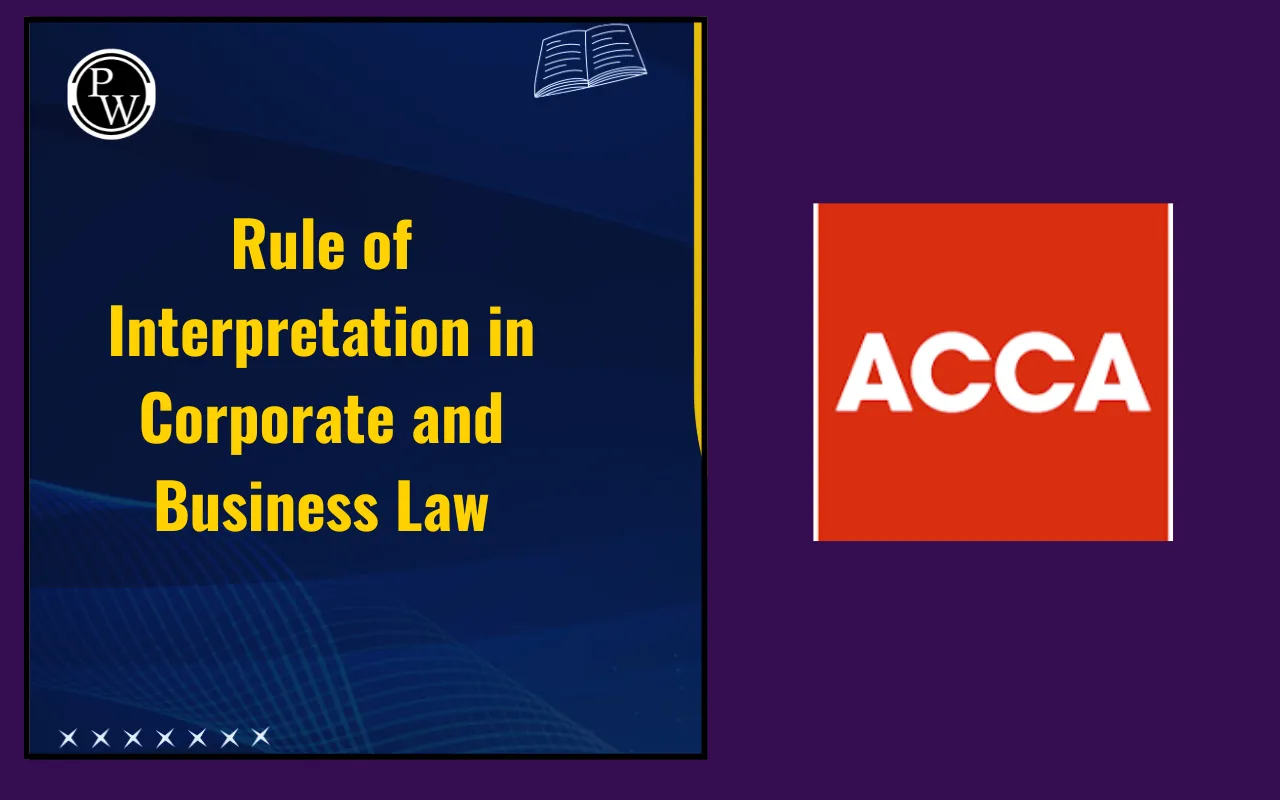
Rule of Interpretation: Understanding the Rule of Interpretation is crucial in Corporate and Business Law. Laws are typically drafted in formal language, which can sometimes lead to multiple interpretations. In these instances, Courts and judges rely on the rules of statutory interpretation to uncover the law’s true intent. These guidelines are essential for applying the law accurately in real-world business situations.
The Rule of Interpretation is a technique employed by courts to comprehend the precise significance of terms used in legislation. Determining the meaning of a law is not for the average person. Only judges and courts possess the authority to interpret. In commercial law, this holds significant importance since even minor variations in word meanings can result in substantial changes in legal rulings
Sometimes, the language of law is not clear. This occurs due to shifts in society or emerging business methods. Courts apply rules of statutory interpretation to eliminate ambiguity and guarantee that the law is enforced justly. These guidelines also ensure that the underlying intention of creating the law is honored.
There are five main rules that courts use, these are simple tools to make sense of laws:
The literal Rule entails interpreting the law’s words precisely as they are stated. Judges neither add nor take away anything. This principle serves as the foundation for interpreting laws in business jurisprudence
If a regulation states that a business is required to pay tax on “profits”, then the precise dictionary definition of the term “profit” will be utilized.
The Golden Rule is used when the literal meaning of the law leads to an absurd or unfair result. In such cases, the judges choose the meaning that fits the purpose of the law.
For Example, if the literal rule leads to an outcome that is against common sense in a business contract, the golden rule is applied to find the correct meaning.
The mischief rule examined the purpose behind the establishment of the law. It centres on the issue that the law aimed to address.
For example, if a regulation is established to prevent unfair commerce, judges will apply this guideline to ensure the law serves to safeguard equitable business practices.
This regulation indicates that when a statute lists particular items and then uses general terms, those general terms will only refer to items of the same category.
For example, if a regulation states “automobiles, bicycles, and additional conveyances,” the phrase “additional conveyances” refers to vehicles similar to cars and bicycles, such as mopeds, rather than aircraft.
This rule means that when certain things are listed in a law, anything not listed is excluded.
For Example, if a law mentions “partnership firms and private companies”, then public companies are not included.
Courts often rely on both external and internal aids to help with the interpretations. Internal aids refer to elements found within the law itself, such as titles, headings, and definitions. On the other hand, external aids come from outside sources, including past court rulings, dictionaries, and historical documents.
The Rule of Interpretation helps in avoiding confusion in contracts, company policies, and trade agreements. In corporate law, where the meaning of a single word can change the outcome of a case, using the rule of statutory interpretation ensures fairness and clarity.
When a business encounters a legal problem, the court initially uses the literal rule. If that fails. The golden rule is applied. If confusion persists, the mischief rule is enacted. In addition to these, internal and external tools for interpretation assist judges in understanding the real significance.
The Rule of Interpretation serves as a framework for courts to comprehend and implement laws accurately. Utilizing the literal rule, the golden rule, the mischief rule, and various techniques, judges guarantee that business laws are equitable and fulfill their genuine intent. Understanding these regulations is extremely beneficial for those studying corporate or business law, as it illustrates how the law functions in practice.
| Also Check: |
| Irrecoverable Debts and Allowances for Recoverables |
| Taxation Examiner Report |
| How to Attempt ACCA MCQs Smartly for Maximum Marks? |
| Can You Finish ACCA in Two Years? |
